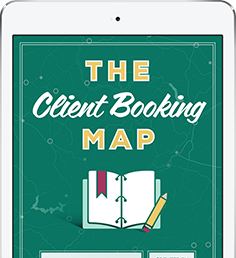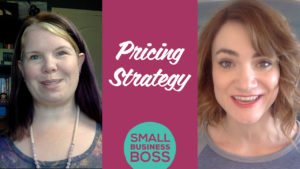As a service provider, pricing can be such a head trip. For many of us, we take it way too personally.
Plus, how to price your services can be flat out confusing. Some people charge $100 for something that someone else charges $1000 for and it’s challenging to understand the reasons why the prices vary so dramatically.
Your pricing strategy doesn’t have to be confusing or feel overly personal when you understand some basics of pricing strategy. Best of all, nailing your pricing is one of the easiest ways for you to grow your business as a service provider and make more money.
In this video, you’ll learn three things to consider when creating your pricing strategy.
#1. Value
The first thing to consider when it comes to your pricing strategy is understanding the value you deliver. You can’t set a price or sell anything if you aren’t able to articulate the value you deliver.
People’s willingness to pay is proportionate to how much pain they’re in. You need to be able to articulate clearly how you can help them solve whatever problem they’re having. If they aren’t clear on how you help solve their problem, they’re not going to pay you!
Many times we struggle with what our value proposition is or we simply sell ourselves short as we don’t think we’re good enough. We tell ourselves stories about how much we should charge or what we actually do for our clients.
If you want to price things in a way that’s profitable, you need to nail down the value you deliver.
Ask yourself:
- What results do I deliver my clients?
- How do these results help them succeed?
- What results am I really delivering?
Once you can answer those three questions, you’re on your way to creating your pricing strategy as you’ll be able to articulate your value.
#2. The Market
The second element of your pricing strategy is the market. This can be a heady topic, so I’m going to share some examples for you.
First, a few questions to consider:
- Who is, and how many are, willing and able to purchase your service?
- How saturated is the market?
- What is the range of pricing in your industry? What is your position in the market?
It all comes down to supply and demand. If there are very few people who do what you do and people are looking for your services, you can charge a premium without having to differentiate too much.
Conversely, if there are a lot of people who offer what you offer and very few people looking for the service, you can still charge a premium, but you have to position yourself as fundamentally different and better than your competition.
To figure this out, you have to do some research specific to your industry.
Let’s say you’re a bookkeeper. There are lots of bookkeepers and lots of people looking for bookkeepers. But you want to charge a premium because you’re a rockstar bookkeeper.
If you do some research, you can figure out that if you do bookkeeping for a specific niche, like law firms, then you can charge more because you are positioning yourself as THE EXPERT when it comes to bookkeeping for lawyers.
#3. Your Pricing Model
The last, but arguably one of the most critical, piece of pricing strategy is your pricing model.
You need to spend some time figuring out what makes the most sense for you when pricing your services.
Usually with services, we see people charging by the hour, which isn’t entirely wrong, but it can create a cap on your income.
When you’re offering services, you’re trading time for dollars no matter what you’re doing – so please, please don’t get stuck here.
Your goal should be to look at how you can give yourself a raise by considering project pricing with a flat rate. That will factor in a higher hourly rate and help you grow your income.
If you’re a total pro and your skills are in demand, you can take your project pricing to the next level with value-based pricing. If you know your service generates X or Y, you can command those types of prices.
Get Into Action
If you feel like your pricing could use a check-up, it probably can. Your pricing is hands down the easiest way to start bringing in more money without doing anything drastic.
Set aside some time in the next few days to research your market and take a look at your current prices vs. what you find. Then, take steps to increase your prices with both your current clients, and your new ones.
[embed_popupally_pro popup_id=”16″]


